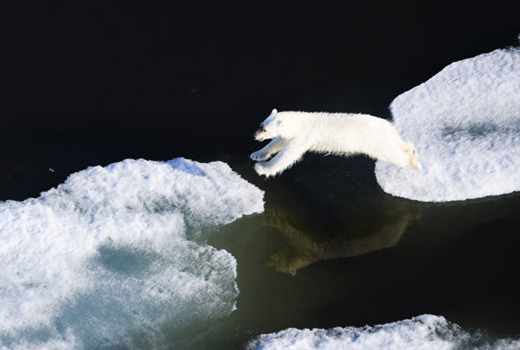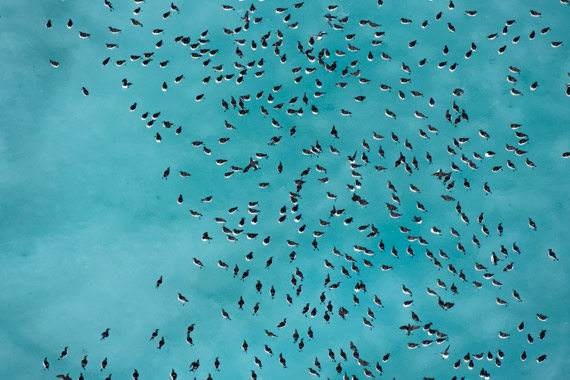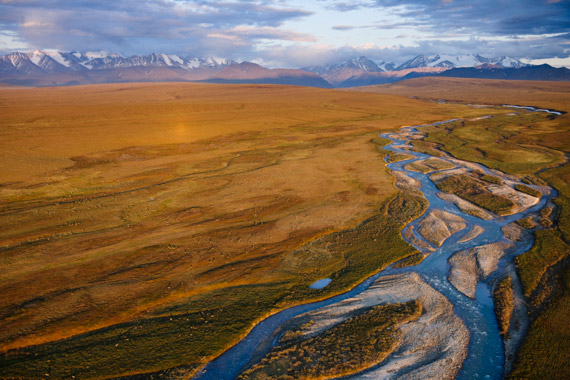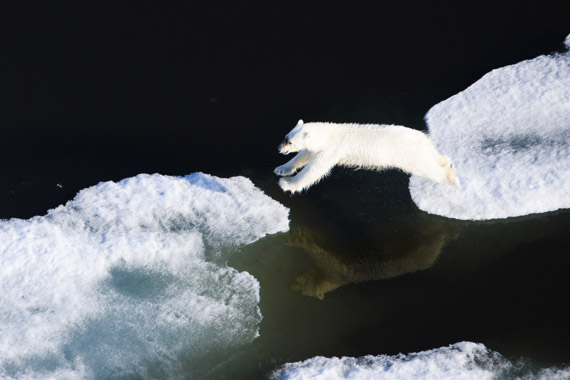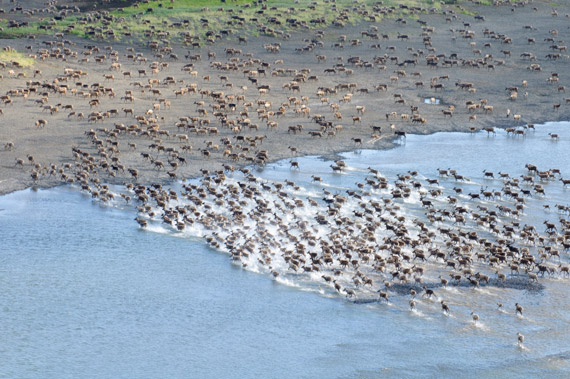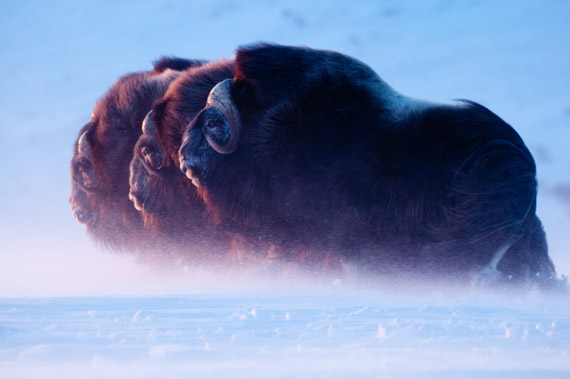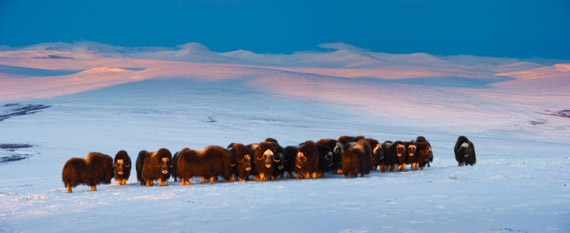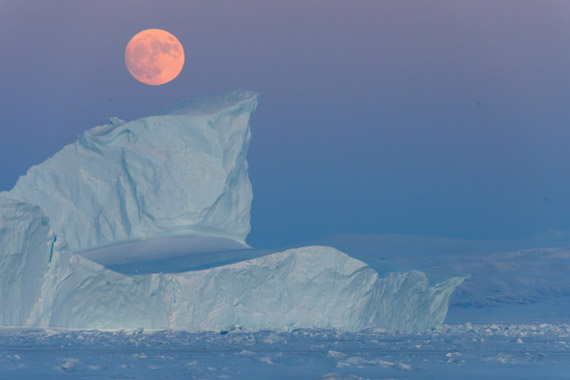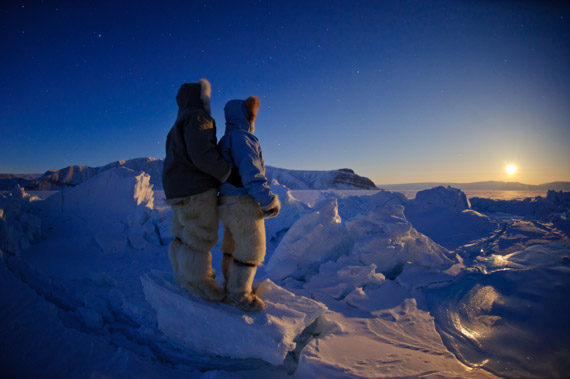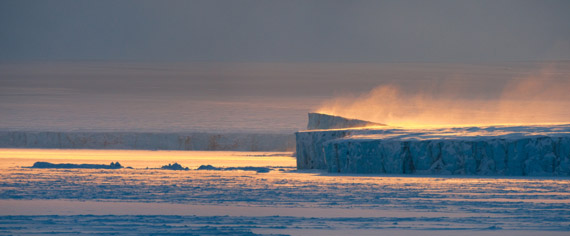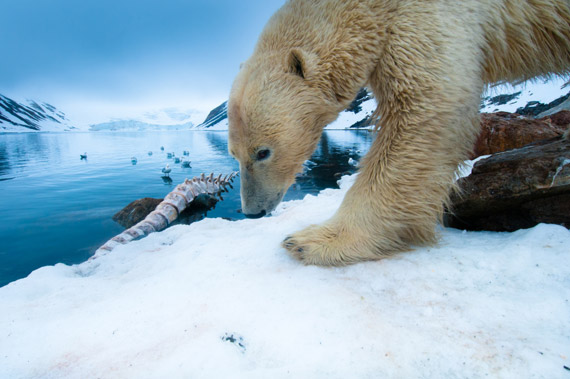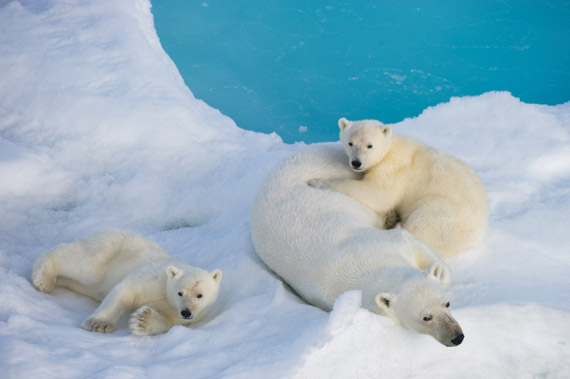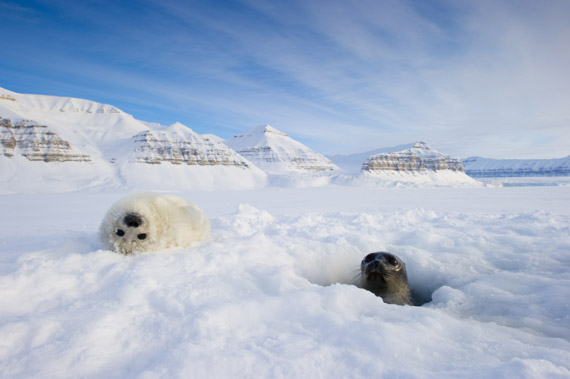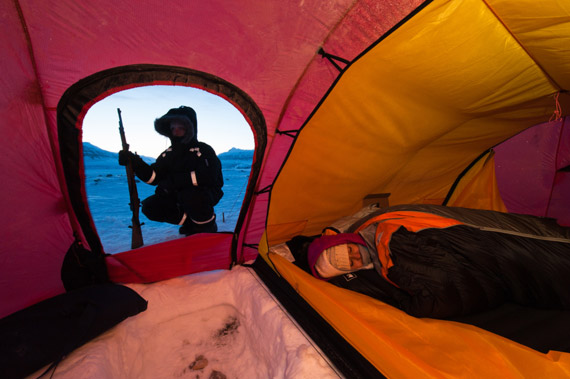Florian Schulz’s To the Arctic Intimate Photographs of Arctic Wildlife
Throughout the course of several years, award-winning wildlife photographer Florian Schulz has traveled to remote locations in the American and European Arctic to photograph their astounding diversity of life. His new book, To the Arctic, includes expansive images showing the incredible size of the Arctic wilderness as well as some of the most intimate photographs of Arctic wildlife ever taken. To the Arctic is the official companion book to the upcoming IMAX® film To the Arctic 3D – a co-production of Warner Bros. Pictures, MacGillivray Freeman Films and IMAX Corporation – to be released in 2012.
The book’s photographs offer a window into the lives of animals uniquely adapted to survive in the Arctic environment, from large woolly musk oxen to vulnerable young seal pups. From air and land, Schulz photographed the tremendous migration of thousands of caribou, which trek across the tundra each year. He used a camera enclosed in a waterproof casing to photograph birds diving into the sub-freezing Arctic Ocean and a remote camera, attached to a rock during high tide and exposed when the tide went out, to photograph polar bears congregating at a whale carcass.
As Schulz returned to the Arctic every season of the year, he noticed climate change effects on the landscape becoming glaringly apparent. He comments that “during my aerial expeditions I was shocked to see the Arctic Ocean west of Barrow completely ice free at the beginning of July, as well as many areas where entire hillsides had come down in giant mudslides, taking all the vegetation with them.” The photographer notes that many animals, like walrus and seals, are struggling to survive without the sea ice that once remained frozen throughout the year. Perhaps most well known is the plight of the Arctic’s most iconic creature, the polar bear.
Schulz joined a crew from MacGillivray Freeman Films as they filmed a mother polar bear and her two young cubs traveling across the pack ice on the Barents Sea off the coast of Svalbard, Norway. The crew watched from their boat as mother and cubs hunted, played and slept on the ice throughout the course of one week.
To the Arctic
The following excerpt from To the Arctic is Schulz’ personal account of this once in a lifetime experience:
A thundering bang rips me out of my sleep. I open my eyes but see only darkness. For a moment I try to figure out where I am. Then I hear it again: another deep, hollow clang, followed by a high-pitched scraping noise. I slowly come to and remember that I am below deck on an old sealing vessel, traveling to northern Svalbard with the MacGillivray Freeman film team.
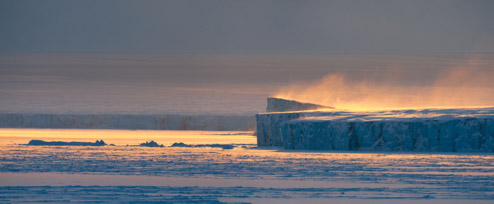
Florian Schulz
I quickly rush up to the helm and immediately understand. We are entering a part of the Barents Sea that is full of loose sea ice. Like a bumper car, our ship tries to find open passage between the ice floes, but collisions are unavoidable. Because of a special combination of winds and currents, all the remaining broken sea ice in an area of hundreds of miles is concentrated here. This ice will soon melt, but for now it is the only place in the region where polar bears can hunt for seals until the return of the sea ice in the fall.
Everyone on the ship, from guides to film crew members, is on deck, at the helm or up in the crow’s nest searching the ice for polar bears. It does not take long before our experienced guides spot two bears, a female and a mature cub, resting together on a piece of ice. Our captain slows the boat and brings it to an idle, letting it drift among the ice. Soon the bears’ curiosity takes over, and they move toward the boat to investigate.
We have entered the home of Ursus maritimus, the sea bear. I am beginning to fully understand the origin of this name. I have observed bears swimming for miles in freezing water that would render a human immobile within minutes. I have watched them dive under ice floes to surprise seals hauled out on the other side and have even seen them surface with a small ringed seal in their mouth after catching it underwater. I have been amazed at how they seem to be completely at ease resting on small pieces of ice, drifting miles from shore, surrounded by open water.
To our surprise, another female with two small cubs also heads our way. She seems curious about the boat at first, then loses interest but stays close nevertheless. We wonder if it is a conscious strategy on her part to deter large males that could be dangerous to her and her cubs, or if she simply enjoys being near us. Despite the size of the boat, she treats it with indifference, as if it is a floating iceberg. This gives us an ideal platform as seemingly invisible observers and allows us to watch her for the next seven days.
Never in my wildest dreams did I expect to witness polar bear life at such close range for such an extended period.
Over the course of the week, our polar bear mother (as we came to think of her) sometimes walks within twenty feet of the boat and simply lies down with her cubs and falls asleep. But she does not stop there. After resting for a while she sits up, takes a look around and invites the cubs to nurse. She falls into a kind of trancelike state, letting her head slowly sink down in exhaustion as her cubs drink. I can clearly hear the suckling sounds and even notice a purring from the cubs. It is an unforgettable sight: mother and cubs, nestled together on the ice in the warm late-evening light, with drifting sea ice leading to the horizon where it meets the edge of the Austfonna ice cap under a darkening gray sky.
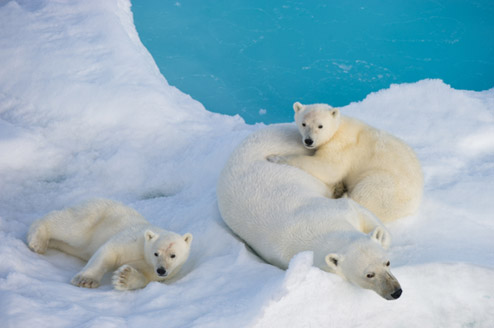
Florian Schulz
One day I happen to be watching as one of the cubs wakes up first from its nap. Before long it is pestering its sibling, biting it and pulling on its fur. They wrestle, rolling over the ice like little fur balls while their mother just watches them for a moment, sniffs the air and then goes back to sleep. Eventually the two cubs calm down, and one begins digging in the ice while the other seems to be fascinated with his own reflection. In my mind’s eye I see the cub leaning over the edge of the ice, looking straight down into the water as if staring into his own eyes.
One particular night we watch a male polar bear slowly working his way toward our female. The female is resting close to our boat after feeding on a seal and nursing the cubs. It is a tough job being a mother polar bear on the pack ice. She gets little sleep because she always needs to be alert to threats from marauding males, and she has endless demands from playful and hungry cubs. Exhaustion has finally overtaken our female, and she is sleeping. Her cubs play while the male quietly approaches, often swimming between the ice floes. With only his head above water, he disappears from view down at water level.
The crew has grown attached to the mother and cubs, and those of us awake on deck intently watch the scene unfold. The male, not knowing exactly where the female is, climbs out onto the ice just as she wakes up to check her surroundings. She quickly detects him and huffs over to her cubs to grab their attention. Intense seconds follow. As the female assesses the intruder, he quickly slips back into the water and continues toward her. She gives the cubs a sign and they all bolt, ears pinned back, running for their lives, jumping from ice floe to ice floe and swimming when the distance between the floes is too great. Sometime the cubs cling to their mother’s back for a moment, but they can’t hang on for long. The whole scene seems frantic, and we feel as if we can sense their fear. They keep going long after they make good their escape.
This event, and the entire week we spend observing these bears, leave me in awe of a polar bear mother’s dedication to her cubs. It is incredible to witness her gentleness and her fierce protectiveness as she teaches them the skills they will need when the time comes to fend for themselves. The images in my memory are as vivid to me as those I capture with my camera and as indelible.
Check out To the Arctic at www.welcometothearctic.com.
Learn more about Schulz at www.visionsofthewild.com.
Florian Schulz’s To the Arctic Slideshow

